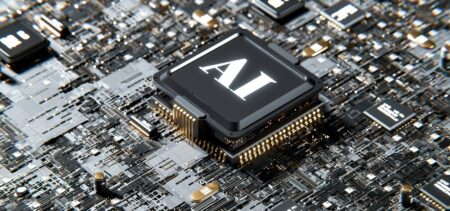Today’s fast-paced digital landscape demands that network administrators respond quickly to performance issues, security risks, and other problems that could result in costly system outages.
But as networks continue to grow in complexity, doing so becomes increasingly challenging. Unsurprisingly, maintaining visibility across intricate distributed and hybrid infrastructures result in unprecedented pressure on IT teams—and an increase in staff turnover rates. In fact, an EMA Research Report reveals that 87.5% of organizations find it difficult to recruit and retain these professionals.
As artificial intelligence (AI) and machine learning (ML) continue to transform all aspects of the business world, more companies are embracing deep learning capabilities to monitor, manage, and predict activity across their IT environment.
In this article, we’ll take a look at some common use cases for AI and ML in network management.
Telemetry Data Collection
Telemetry data refers to the collection and analysis of information from IT devices and infrastructure. It can range from data on network performance to equipment health and resource utilization.
With telemetry data, network administrators gain visibility into the overall performance of their environment, enabling easier monitoring and troubleshooting. Add intelligent technologies into the mix, and telemetry data collection becomes much more efficient.
By using AI/ML engines, operators can automate the process of identifying anomalies, eliminating false positives, and generating viable remediation actions. AI/ML tools will also help analyze much larger sets of systems and devices than what is humanly possible.
Machine Reasoning for Lifecycle Management
What Is Machine Reasoning?
Machine learning (ML) enables engineers to teach machines how to do complex tasks through the analysis of large volumes of data. Machine reasoning (MR) builds upon these capabilities, by adding abstract thinking and intent into the equation.
By setting a clear objective, for example, improving network speed in a certain area, MR and ML work together to define the technical improvements that must be made to achieve the desired networking speed in that area. This is done by dividing the original objective statement into service-level objectives (SLOs) and network-level objectives.
If the desired goal is not achievable, the combination of MR and ML algorithms highlights the issues that are hindering the network from operating at a quicker speed.
Lifecycle Management
The process of network lifecycle management entails planning changes, implementing them, and managing ongoing operations. Also known as the design, implement, and operate (DIO) phases, this helps administrators consistently monitor and improve network performance.
With tools and processes that leverage MR, lifecycle management can be automated and enhanced. MR can be used to gather data from vast numbers of devices, identify risks and vulnerabilities in their configuration, and provide suggestions for upgrades or changes.
Predictive Maintenance
For businesses of all sizes, network downtime can lead to losses in revenue, productivity, and customer service. For that reason, predictive maintenance is one of the most critical aspects of IT teams’ day-to-day operations.
AI/ML tools automate the process of data collection and analysis, alerting and notifications, as well as continuous monitoring and troubleshooting. By taking a proactive approach to potential issues that could cause IT outages, network professionals can significantly reduce the possibility of service interruptions and failures.
Another notable benefit of using AI/ML for network management is predictive modeling. Whenever significant changes take place in a system’s behavior, teams can flag these changes and note them as potential threat indicators. They can then feed this data, collected in vast amounts, into an AI-driven predictive model and shape future decisions based on its output.
Improving Wi-Fi Performance
Similarly, AI and ML can help monitor and improve the performance of Wi-Fi networks. As the demand for high bandwidth grows, service providers can ensure optimal Wi-Fi services through tools like automatic band steering. This directs endpoints to the closest network that provides the strongest signal and fastest connection.
Security and Threat Detection
With cyberattacks growing increasingly sophisticated in their exploit techniques, threat detection software must be highly effective. By detecting and mitigating threats in real-time, platforms powered by AI/ML can bolster organizations’ security measures.
Threat Detection
Machine learning algorithms help IT teams spot cyber threats quicker than traditional solutions can. After analyzing large amounts of data collected from the network, AI and ML tools will identify potentially risky patterns and activities that may be taking place.
Threat Analysis and Response
With deep analytics capabilities, AI and ML have the power to provide network teams with a deeper understanding of how cyber threats impact the business. Using the insights gathered from threat analysis, teams can begin to develop more effective mitigation strategies.
Additionally, AI and ML tools can be used to identify and block malicious traffic—but when threats do enter the network, they provide automated responses to prevent them from escalating into successful attacks.
Some top AI-enabled cybersecurity solutions on the market include:
IoT Device Management
The rise of the Internet of Things (IoT) has increased complexity in companies’ networks, adding a variety of equipment and endpoints that require monitoring and securing. AI and ML tools can help with this.
The sheer number, diversity, and data output of IoT devices makes it nearly impossible for traditional network management approaches to track them. AI and ML solutions can help monitor IoT equipment in the following ways:
- Device Discovery and Inventory Management
AI-enabled algorithms discover and verify IoT devices as they connect to the network, enabling IT teams to maintain an updated inventory—from details of the device type to its serial number. With ML capabilities, IT professionals are also able to classify different devices based on their behavior, allowing for easier management.
- Anomaly Detection and Load Balancing
Through continuous monitoring of IoT devices, network administrators can use AI and ML to uncover potential issues or threats from anomalous behaviors, often including unusual data transfer rates or communication patterns.
Load balancing reduces a network’s propensity to fail by distributing traffic across various resources according to their usage patterns, increasing its speed and lowering its latency. This ensures that all servers receive a fair share of traffic and eliminates congestion or underutilized resources.
Conclusion
Networks are the lifeblood of modern businesses and deserve to be treated as such. Intelligent AI and ML technologies provide the data analysis, speed, automation, and security needed to lessen an ever-growing burden on today’s IT teams. Ensuring that networks are not only operational but performing optimally, is a key component of building a successful business today.
In closing, the use cases for these tools stretch far beyond those explored in this article and will continue to transform the network management landscape in years to come.






















